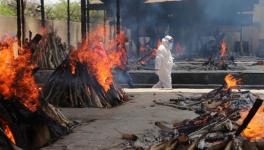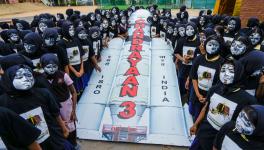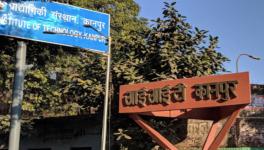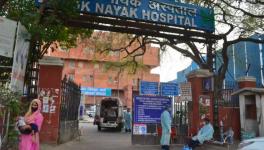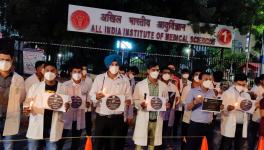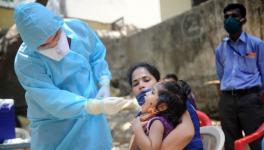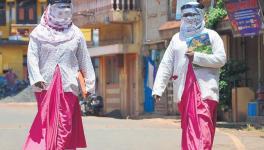COVID Mishandling: Misuse of Scientists, Abuse of Science
Representational use only.
Faced with scathing and mounting criticism of its mishandling of the COVID-19 pandemic in India, the government seems to have launched an orchestrated defence of its policies and actions. Significantly, the task of opening this counter-campaign has been assigned to the leading science administrators in the country, namely the principal scientific advisor (PSA) to the government of India, and the secretaries of the department of science and technology (DST) and of the department of biotechnology (DBT). Each of them has given rather detailed interviews to major Indian newspapers.
There are perhaps two reasons for this choice. First, they are considered the best and most qualified persons to defend the government’s COVID policies, which the world expects to have been science-led. Second, the government is trying to leverage the credibility of scientists, especially in India where they are held in high esteem, certainly in comparison with politicians and bureaucrats.
COMMAND PERFORMANCE
Unfortunately, these interviews come across as command performances on behalf of the powers that be, aimed at countering the charges raised against the government at home and abroad. Regrettably, the arguments advanced by these scientists to defend and justify the government response are often unscientific, are contrary to available information, and echo government propaganda rather than engage in evidence-based reasoning, which is at the heart of science. And even while mildly admitting to possible missteps, they immediately rationalise the same.
If the focus of the government is on countering any and all criticism rather than learning from past errors, how can the response improve now and for the future?
One can understand, that being in government, these scientists find it difficult to openly contradict official views. Yet, it is hugely disappointing to see India’s top science administrators going out of their way to throw their weight behind self-serving government narratives. Surely, in science, one learns as much from mistakes as from successes, provided evidence is observed and analysed with an open mind.
For the government to have forced scientists to act as a shield for its policies, to which the scientists may themselves not have contributed, is a misuse of scientists. For scientists to lend their societal prestige to echo governmental spin and talking points is an abuse of science.
‘DIDN’T ANTICIPATE SEVERE SECOND WAVE’
One of the key arguments common to these interviews is that no scientist, model or study had predicted the scale and severity of the second wave. It is said the government had ramped up preparedness for up to one lakh (100,000) cases a day, as at the earlier peak, but had no warning of the huge surge that came this year, was taken by surprise and therefore, could not take adequate measures. This argument is problematic at several levels.
Surely the government was not waiting for others to warn of a severe wave. DST’s own mathematical “super-model” had apparently given an “informal alert” of a second wave in March when cases already exceeded one lakh daily and, at a meeting with V K Paul at NITI Aayog, predicted a peak of less than one lakh per day by the second or third week of April 2021. It is baffling that the government would still rely on this “supermodel,” with an established poor record from the first wave, not least because it is purely mathematical without epidemiological inputs.
The interviews admit that scientists from India and abroad were warning of a second wave, and that information was available of second waves in the United Kingdom and elsewhere in Europe a few months earlier. Since these were high-intensity waves, fuelled by variants that should also have warned scientists and decision-makers in India of what may probably lie ahead. Sero-surveys had shown substantial vulnerability of the population, and emergence of variants with higher infectivity had been observed.
On almost all aspects, these interviews harp on a lack of scientific certainty, despite plenty of actionable evidence. Policy-making, especially in complex and highly variable contexts, like pandemics, can and should be done anticipating trends based on best interpretations of available evidence while awaiting further data and confirmation, rather than waiting for exact findings and perfect responses.
‘COULDN’T AND DIDN’T PREPARE’
The interviews emphasise that even if preparedness had been enhanced and accelerated, these would have been inadequate given the scale and severity of the surge. It is argued that it is not possible to amplify to required levels in such a short time: “You can build about 20-50 per cent more capacity… [but] a five-fold increase in capacity cannot be built in a year.” Higher capacities can, however, surely be built to the maximum extent possible, and that would save numerous lives. Could some lessons from the first wave have helped?
The interviews highlight augmentation of hospital facilities and other infrastructure, including oxygen, during and after the first wave, and suggest that more needs to be done now as also to prepare for the future. Yet, there is no mention of the extraordinary delay in procuring PPE (personal protective equipment), ventilators and test kits till cases were high, and the delay of almost eight months in ordering oxygen generation plants and getting them installed during April-May 2021 when the country was gasping for breath.
These measures, even if inadequate, would have helped but were not done. Large field hospitals with oxygenated beds in Delhi and elsewhere were also prematurely dismantled after the first wave tapered off, prompted by the triumphalism of the government. And the whole country is witnessing the dire shortage of vaccines, clearly showing poor advance planning, belying the confidence expressed in the interviews about the India-made vaccines.
It is noteworthy that the Brihanmumbai Municipal Corporation had, with praiseworthy foresight, retained its “jumbo” temporary COVID facilities and had built up a substantial buffer stock of oxygen which stood it in good stead in April-May 2021, clearly showing that such anticipation and preparedness were indeed possible.
VARIANTS & SECOND WAVE
There is some hesitant admission in the interviews that mutations may be at least one of the factors influencing the second wave, albeit accompanied by various qualifying remarks about scientific uncertainty. There is much quibbling about when the so-called Indian “double mutant” B.1.617 was formally identified, what its characteristics are regarding infectivity and severity of disease, and how response may be shaped.
We are told that although the mutant strains look more infective, “insufficient samples have been sequenced and correlated with epidemiological data to arrive at any firm linkage” to the surge in cases and that more studies are required. We are also told sarcastically that the impact of these variants is uncertain since “we don’t have an algorithm in genome sequencing that tells us of the severity” due to variants. The effort is clearly to underplay the significance of the variants, and to counter any charge that a more robust response could have made a difference to the surge.
Technical exactitude aside, India was certainly slow off the mark with regard to gene sequencing and in responding to increasing cases of different mutant strains in India. The Indian SARS-Cov-2 Genomics Consortium (INSACOG) was set up to network different labs with the disease surveillance system to track variants, conduct gene sequencing towards vaccine research and for guiding COVID response measures. Against a target of sequencing 5% of positive cases, less than 1% sequencing has been done so far.
By contrast, other countries such as the UK, European Union and the United States routinely conduct gene sequencing in large numbers of samples, which is how the variants were highlighted in the first place. In the UK, for instance, out of routine sampling of 214,159 cases for gene sequencing, a small number of 11 cases showed the new UK ‘Kent’ variant in South West England, later to be designated B.1.1.7, with another 43 cases elsewhere. By early December this mutation had been labelled a Variant of Concern, and by mid-December, the UK government had introduced a new, more stringent set of lockdown restrictions in London and South West England, succeeding to a considerable extent in containing cases with the variant low in other parts of the UK.
In India, airports had started checking UK arrivals for B.1.1.7 as early as December 20, 2020, but, as in the first wave, failed in rigorous contact tracing and tracking of cases. Cases with both the “UK” and “Indian” variants started spreading considerably, with B.1.1.7 more prevalent in Punjab and Delhi, and B.1.617 more in Maharashtra, as shown in 19,092 samples sequenced by the end-March of this year.
Even members of INSACOG have gone on record to say they had warned the government about the virulence of these variants in early March, and stressed the need to avoid large gatherings to prevent further spread. They say the government downplayed these warnings, a point refuted in the interviews by questioning the meaning of the word “warning” given scientific uncertainties about the variants.
The key point here is that the variants were not taken seriously enough, that gene sequencing in India is extremely low and slow, and is not being used as an indicator for guiding government response measures. Scientists must decide what degree of certainty is sufficient for the purpose now, rather than use the inadequacy of gene sequencing as an excuse for avoiding or postponing policy responses.
Mention must be made of one jarring note in the interview with PSA. With regard to the slow pace of sequencing, he comments that “national health agencies have the networks and personnel, but lack the basic-science insight into the importance and urgency of such as exercise” in a pandemic. One wonders, if this is indeed correct, although National Centre for Disease Control and Directorate General of Health Services may have something to say about it, why the vaunted top scientists did not step in and provide the basic-science insights, and why there was no co-ordinated programme to ensure all knowledge and capacities are harnessed.
THE MESSAGING
The interviews repeatedly stress that, whatever may be done with regard to health system preparedness, these will take time and, therefore, it is essential that the fundamental COVID-appropriate behaviour of masking and physical distancing are consistently maintained. It is also said that this has been difficult to practice or enforce, despite the fact that “in innumerable TV and media discussions and briefings… everyone had been emphasizing that until most are vaccinated, we must follow Covid- appropriate behavior.”
But a totally different messaging was coming from the top political leadership. The Prime Minister declared in end-January that India “has saved humanity from a big disaster by containing corona effectively.” The Union health minister declared on March 7, 2021, when India had over 1.8 lakh cases, that India was already “in the end game of the Covid pandemic.”
Huge election campaign rallies and the massive Kumbh Mela was held involving millions of people in close proximity with scant masking or other COVID precautions. One of the interviewed scientists, however, maintained that election rallies (and the Kumbh) “may have contributed a small fraction…[sic]” to the cases, but that similar behaviour had become widespread.
ROLE OF SCIENTISTS IN POLICY-MAKING
To conclude, little is known about the actual role played by these or other scientists and science administrators in policy-making and shaping government response with regard to the pandemic. There is wide reportage in the media, quoting named or unnamed scientists in decision-making or advisory positions, of their opinions and those of advisory bodies they serve in being ignored, negated, or simply not even solicited.
It is also not known whether scientific inputs from these three agencies ever found their way to top decision-making echelons of the government. None of the interviews throw any light on this aspect, leaving the public in the dark about the role of scientists in COVID-related policy-making.
One clue, however, is a dead give-away. The PSA was so bold as to comment at a press conference on May 5, that a third wave was inevitable, correctly reasoning that since vaccinations are still minuscule and there is still a very large pool of vulnerable people in the country, conditions continue to be favourable to the virus. He retracted his statement just two days later, saying a third wave may not happen at all “if strong measures are taken.” We may safely presume he was instructed to do so, as his opinion would not assist government spin, which must always triumph over science and reality.
D Ragunandan is with the Delhi Science Forum and the All India People’s Science Network.The views are personal.
Get the latest reports & analysis with people's perspective on Protests, movements & deep analytical videos, discussions of the current affairs in your Telegram app. Subscribe to NewsClick's Telegram channel & get Real-Time updates on stories, as they get published on our website.









